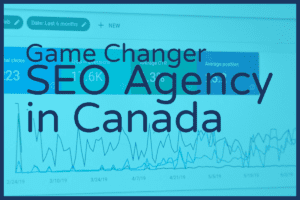
Reading this blog post will better equip you to write prospect emails in a way that ensures a much higher response rate than traditional methods.
If you’re writing prospect emails, you want to do everything you can to maximize your chances of 1) the email being opened, 2) the email being read, and 3) action being taken on the part of the prospect.
Each of these steps is actually incredibly difficult unless you keep your prospect’s best interests in mind. Time is valuable, and showing that you respect your prospects’ time while also providing content showing how you can help is a great way to start off on the right foot.
The Formula of Prospect Emails
Hook Them Early
The first sentence of this post was designed to exemplify this section: the hook. From the beginning, the content was designed to whet your appetite for more, as well as to clearly state what you’ll get out of reading all the way through the article.
The same goes for prospect emails. In essence, you’re writing a blog post targeted at individuals, rather than the public at large. The difference in the audience means that the email content has to change to reflect the specific needs of who is receiving the email.
Take this blog post, for example. The title is direct and states exactly what you’ll get out of reading, just as an prospect emails subject should. If this post was rewritten as a prospect email designed to entice blog readership, it would likely have started with a sentence stating what you, specifically, could get out of reading this blog.
For example, “I’d like to invite you to become a regular reader of this blog, because it may better equip small business owners like yourself to operate in a time-crunched business climate by reaching out to prospects in a more meaningful way than what traditional sales methods might teach you.”
Make it Worth Their While
The phrase, “make it worth their while” certainly refers to them doing business with you being a worthwhile thing to do, but more simply, when you send an email, you need to make it worth their while to read all the way down to the bottom of the email (without skipping sections).
In the first section of the email, the prospect is specifically targeted and a solution is given to a problem that the prospect faces. The following section is the body, in which some supporting information is given to back up the initial claim.
Many business owners are tempted to treat this middle section like the body of an essay, in which an array of impressive qualifications are listed and discussed at length. Big, long blocks of text are great ways to ensure your emails are ignored.
Instead, keep your supporting information to a few case studies and testimonials, and limit it to your years of experience, a few of the more recognizable clients you’ve worked with before, and tangible benefits your previous clients have experienced.
The Open Close
Unlike a face-to-face sales meeting, prospect emails can’t close with a sale. The closing question, “so what would you like to drive home today?” is unanswerable when put in an email. If you try to close a sale with a prospect email, you’re ensuring that your email will be promptly deleted and you’ll be ignored.
Instead, a prospect email needs to close with an invitation to further conversation. They’ve taken the time to read to the end of your (short) email, and so it’s time to use the close of your email to open the door to more discussion.
As the body of the email teases how it’s possible your business can help, the conclusion is a call to action, not to buy, but to reach out to you. Put the ball in their court as they’re ready for more info, ending with something along the lines of, “I’d be happy to provide more information. Reply to this email if you’d like more about how we might work together to meet your goals.”
In essence, the prospect emails need to function the same way a movie poster does. It’s a teaser that contains very little real information to confuse the main goal of driving interest. Keep that email short, sweet, and as curiosity-inducing as possible.



